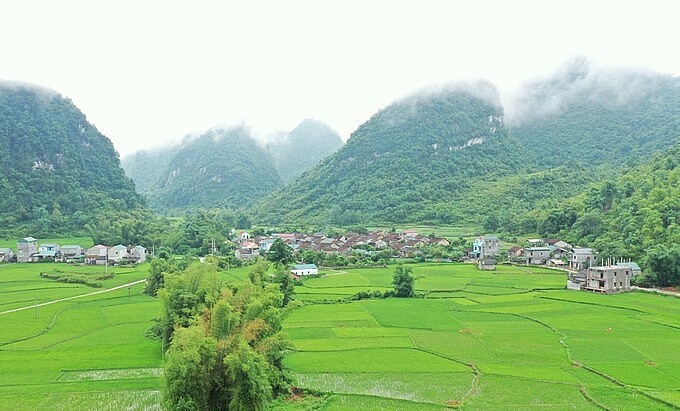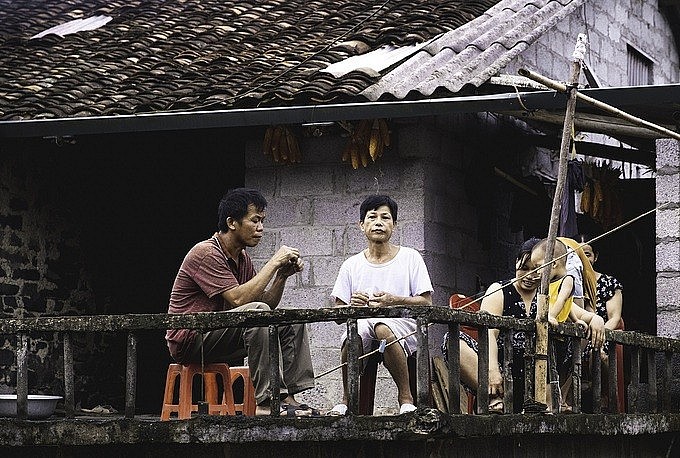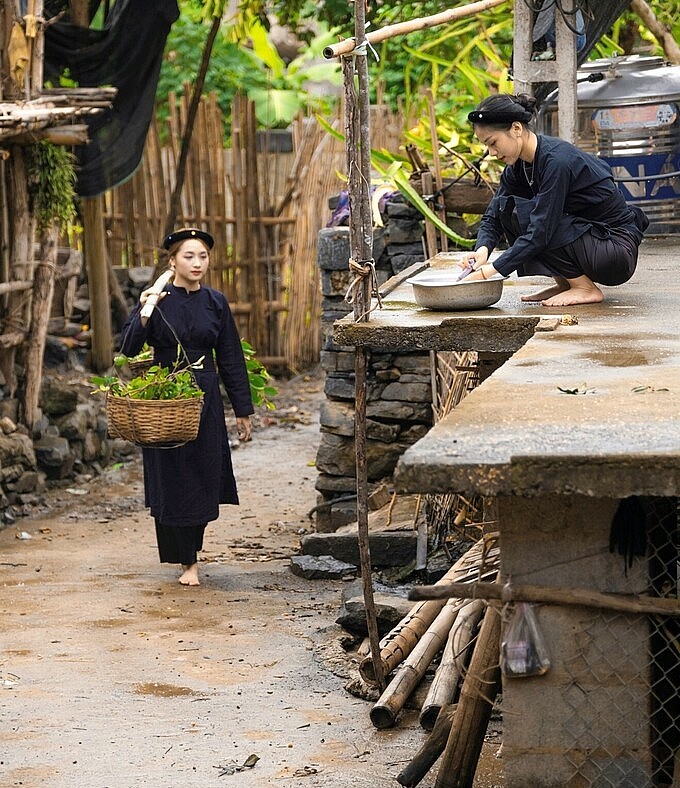 |
| Photo: Ha Cuong, Huu Chung via VN Express |
(Video: Cao Bang Hong)
Cao Bang has so far been the only locality in the country that has not reported any Covid-19 cases in the fourth outbreak. Therefore, many are planning to visit Cao Bang when the outbreak is controlled. Ha Kim Cuong, owner of Cao Bang Hong fanpage, arrived at the village on August 10, said that local authorities planned to establish the largest conservation area of stone houses in the village.
Na Vi village in Minh Long commune, Ha Lang district, about 100 km from Cao Bang city is a peaceful spot to escape the endless hustle found in bigger cities. Na Vi lies at the foot of Phja Cao mountain, surrounded by the green bamboo groves and paddy fields. This area is close to the Quay Son River, forming a natural border with China to the north.Phja Cao mountain, surrounded by the green bamboo groves and paddy fields. This area is close to the Quay Son River, forming a natural border with China to the north.
From Na Vi, tourists can easily discover nearby tourist attractions in the province such as Nang Tien water mine, Nguom Khu cave, Phja Cao mountain, Bat cave, To Thi Hoan temple.Nang Tien water mine, Nguom Khu cave, Phja Cao mountain, Bat cave, To Thi Hoan temple.
 |
| Photo: Ha Cuong, Huu Chung via VN ExpressCuong, Huu Chung via VN Express |
 |
| Photo: Ha Cuong, Huu Chung via VN ExpressCuong, Huu Chung via VN Express |
Na Vi has about 100 households, mainly of Tay ethnic group, living in stone that have existed for hundreds of years. The village is one of the few destinations that reserves traces of the Mac Citadel in Ha Lang, Cao Bang.
The village is loved for its stone and wooden old houses. Some houses have stone steps to make the way to the 2nd floor. In the afternoon, people often gather and relax in a small courtyard surrounded by wooden guardrails under a gutter designed to collect rain water.
Photographer Vu Khac Chung, who lives in Cao Bang, said that when he first came to Na Vi, he was impressed with the ancient stone architecture preserved for generations, the hospitality, the smiles of the elderly, and the crystal eyes of local children.
 |
| Photo: Ha Cuong, Huu Chung via VN ExpressCuong, Huu Chung via VN Express |
 |
| Photo: Ha Cuong, Huu Chung via VN ExpressCuong, Huu Chung via VN Express |
The Tay people cultivate only one rice crop and a vegetable crop (mainly maize) a year. Between the crops, they grow vegetables such as mint and sweet potato. They mostly raise goats, chickens, buffalos for a living.
Traditional costumes of the Tay people are made from self-woven cotton yarn. Both men’s and women’s clothes are dyed with the same colors and have almost no decorative patterns. Hand women wear cloth belts, too.Tay women wear cloth belts, too.
Currently, Na Vi does not have a homestay for overnight trips, but the local people always welcome tourists to stay over. The villagers said they hope local authority would come up with proper plans to develop Na Vi’s tourism. Hopefully, in the months after the pandemic, more homestays and hotels will be built throughout Cao Bang, giving everyone a much needed vacation.
 |
| Photo: Ha Cuong, Huu Chung via VN ExpressCuong, Huu Chung via VN Express |
 |
| Photo: Ha Cuong, Huu Chung via VN ExpressCuong, Huu Chung via VN Express |
 |
| Photo: Ha Cuong, Huu Chung via VN ExpressCuong, Huu Chung via VN Express |
 |
| Photo: Ha Cuong, Huu Chung via VN ExpressCuong, Huu Chung via VN Express |



